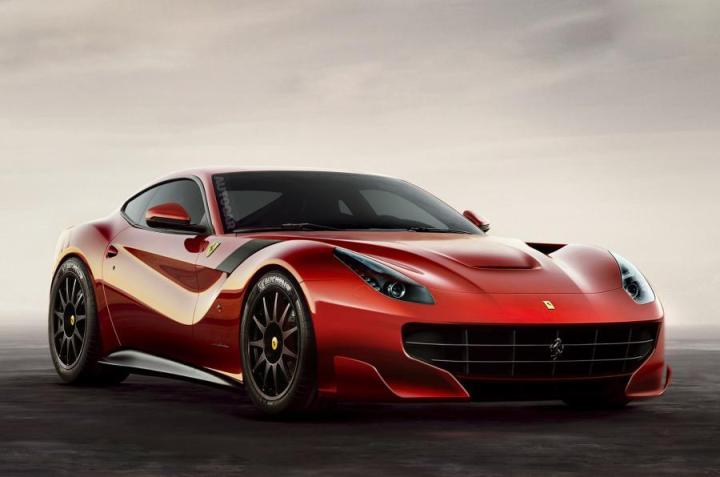
As with the Ferrari 458 Speciale, this new model variant will combine weight reduction, suspension adjustments, and added power to deliver a more track-capable vehicle. Possible the most significant change compared to the regular F12 will be the Speciale’s loss of 200 kilograms/440 pounds. Paired with a retuned 6.2-liter V12 engine good for an extra 30 horsepower over the standard car — 760 horses total — the F12 Speciale will have a power to weight ratio of 531hp per ton.
By comparison, the lower, wider Lamborghini Aventador LP750-4 Superveloce makes just 485hp per ton, and the elite-class Porsche 918 Spyder hypercar has a similar power-to-weight ratio.
The Ferrari F12 Speciale’s 0-to-60 mph time should drop to somewhere below 3.0 seconds while its top speed may be drag-limited at a mark somewhere below the 211 mph threshold of the standard F12, thanks to a more aerodynamic body kit.
To belabor the point of how dramatic 440 pounds of weight reduction is, the 458 Speciale only lost 209 pounds compared to the regular 458 Italia. It’s a fair guess that the F12 Speciale trimmed the fat from its body panels, windows, wheels, interior mats, sound deadening, infotainment system, and other hardware. Don’t expect much “grand touring” from this iteration of the F12, but you’ll probably be able to pay extra to add some of those items back in.
Other points of improvement on the F12 Speciale will be a suspension overhaul, steering adjustments, and reworked traction control systems to eke the most out of the vehicle’s performance.
We could see the last naturally aspirated, non-hybridized Ferrari to go on sale at the Geneva Motor Show next March, starting somewhere around the $450,000 mark.


